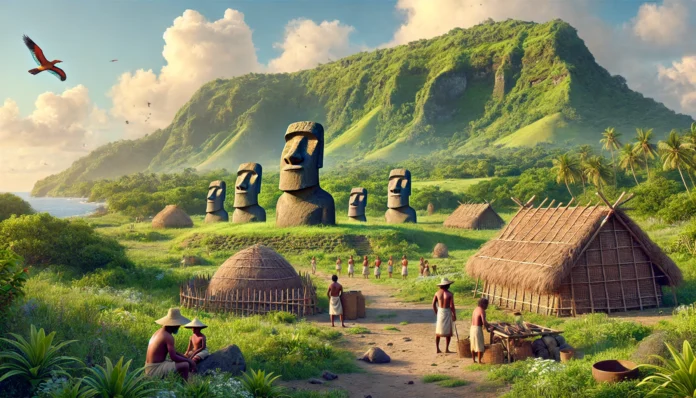AI Helps Researchers Debunk Traditional Theories About Easter Island
Easter Island, known for its enigmatic moai statues, has long been shrouded in mystery and speculation. For decades, the prevailing narrative suggested a catastrophic population collapse among the island’s early inhabitants. However, a new study leveraging cutting-edge AI technology is challenging this traditional theory, shedding new light on the island’s history through the lens of archaeological rock gardens.
The Traditional Narrative
The story of Easter Island, or Rapa Nui, has often been framed as a cautionary tale of environmental degradation and societal collapse. According to this narrative, the island’s early Polynesian settlers overexploited their resources, leading to deforestation, famine, and ultimately, a dramatic population decline. This interpretation has been widely accepted and propagated in both academic circles and popular culture.
Enter AI: A New Perspective
Recent advancements in AI have enabled researchers to analyze archaeological data with unprecedented precision. In this groundbreaking study, AI algorithms were applied to the island’s rock gardens, which are carefully constructed agricultural plots designed to enhance soil fertility and protect crops from harsh winds. These rock gardens provide crucial insights into the agricultural practices and resilience of the Rapa Nui people.
The Findings
The AI-driven analysis revealed several key findings that challenge the traditional collapse narrative:
- Sustained Agricultural Practices: The study found evidence of sophisticated and sustained agricultural practices over several centuries. The rock gardens indicate that the Rapa Nui people were adept at managing their environment and adapting to changing conditions, rather than exhausting their resources.
- Stable Population Levels: Contrary to the idea of a sudden population collapse, the data suggests that the population remained relatively stable over time. This stability is reflected in the continuous use and maintenance of the rock gardens, indicating a resilient and adaptable society.
- Resilience to Environmental Changes: The Rapa Nui demonstrated remarkable resilience to environmental changes. The AI analysis showed how they modified their agricultural techniques in response to climatic variations, further debunking the theory of environmental mismanagement leading to collapse.
Implications for Our Understanding of Easter Island
This new perspective not only challenges the long-held belief of a catastrophic population collapse but also highlights the ingenuity and resilience of the Rapa Nui people. By applying AI to archaeological research, scientists can uncover more nuanced and accurate historical narratives, moving beyond simplistic explanations of societal decline.
The Future of Archaeological Research
The use of AI in archaeology is still in its early stages, but this study exemplifies its potential to revolutionize our understanding of the past. By enabling more detailed and comprehensive analyses of archaeological sites, AI can help uncover the complexities of ancient societies and their interactions with their environments.
As researchers continue to harness the power of AI, we can expect to see more breakthroughs that challenge conventional wisdom and provide deeper insights into human history. For Easter Island, this means recognizing the resilience and ingenuity of its inhabitants rather than viewing them as victims of their own making.
The story of Easter Island is far from being fully told. Thanks to AI, researchers are now able to paint a more accurate and respectful picture of the Rapa Nui people and their remarkable ability to thrive in a challenging environment. This study not only debunks the myth of a catastrophic collapse but also opens the door to a more nuanced understanding of how ancient societies adapted and persevered. As we continue to explore the past with the help of modern technology, we may find that many of our long-held assumptions are ready to be rewritten.


